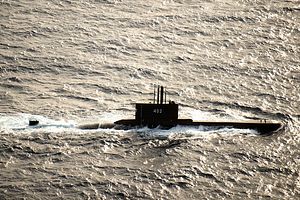This week, reports surfaced about the fact that Indonesia had allocated funding for the procurement of another submarine. While the development itself is not surprising given the Southeast Asian state’s longstanding desire to boost its capabilities on this front, it nonetheless deserves attention amid the challenges Jakarta has faced in this respect as well as in its wider military modernization efforts more generally.
As I have noted before in this pages, Indonesia, the world’s largest archipelagic state, once operated one of the more capable submarine forces in Asia, with 12 Whiskey-class submarines purchases from the Soviet Union back in the 1960s and 1970s. Today, however, it is woefully underequipped relatively speaking, with just two German-built Type 209 submarines along with two of the three South Korean submarines it ordered back in 2012 and received in 2017 and 2018 (the third is being constructed in Indonesia).
Even taking into account that full order, with the Type 209s expected to be decommissioned soon, Indonesia would still be well short of the 12 submarines Indonesian defense officials have said the country needs to police its waters. While there have been attempts to address this significant gap over the years with talk of the mulling of new submarine purchases from various sources, there has also been a recognition that Jakarta will probably remain far short of that 12 submarine requirement for years to come.
This week, the Indonesian submarine program was in the headlines again with reports on Jakarta’s plans to acquire what would now be considered its sixth submarine. Defense outlet IHS Jane’s said that according to a document obtained by it on August 28 from the Indonesian defense ministry (KEMHAN) directorate for defense potential, the ministry has set aside a sum of 283.8 trillion rupiah ($1.9 million) for the acquisition of a sixth submarine.
Jane’s said that the document indicated that funds, which were categorized as drawn from the Indonesian defense budget allocation for 2018, were generally for consultancy services related to the acquisition of the new submarine, including on how Indonesia’s local industry can better benefit from the contract once it materializes in terms of aspects such as transfer of technology agreements.
The fact that such funds have been allocated is in and of itself not surprising. Given that this is a priority acquisition for Indonesia and the country is still so far behind on acquiring even basic capabilities on this front, it makes sense that money has been earmarked for that purpose as part of its wider ongoing military modernization plans under the so-called Minimum Essential Force (MEF) blueprint.
Yet, beyond this general point, without much more in the way of specifics, it is difficult to assess exactly what this means for where Jakarta is with respect to procuring future submarines. Given the manifold challenges that remain for Indonesian military modernization – from irregularities to interoperability to inadequate funding – details such as how contracts are managed, who the potential players might be, and what such fund allocations mean for wider tradeoffs in defense planning, will be significant and meaningful indicators of how things proceed on this front.
As of now, those details are yet to be made publicly available. But as they are, the specifics, along with broader developments on the defense side as well as notable political events – not least a presidential elections set to take place next April – will help us develop a relatively firmer understanding of where Jakarta is on this front.

































